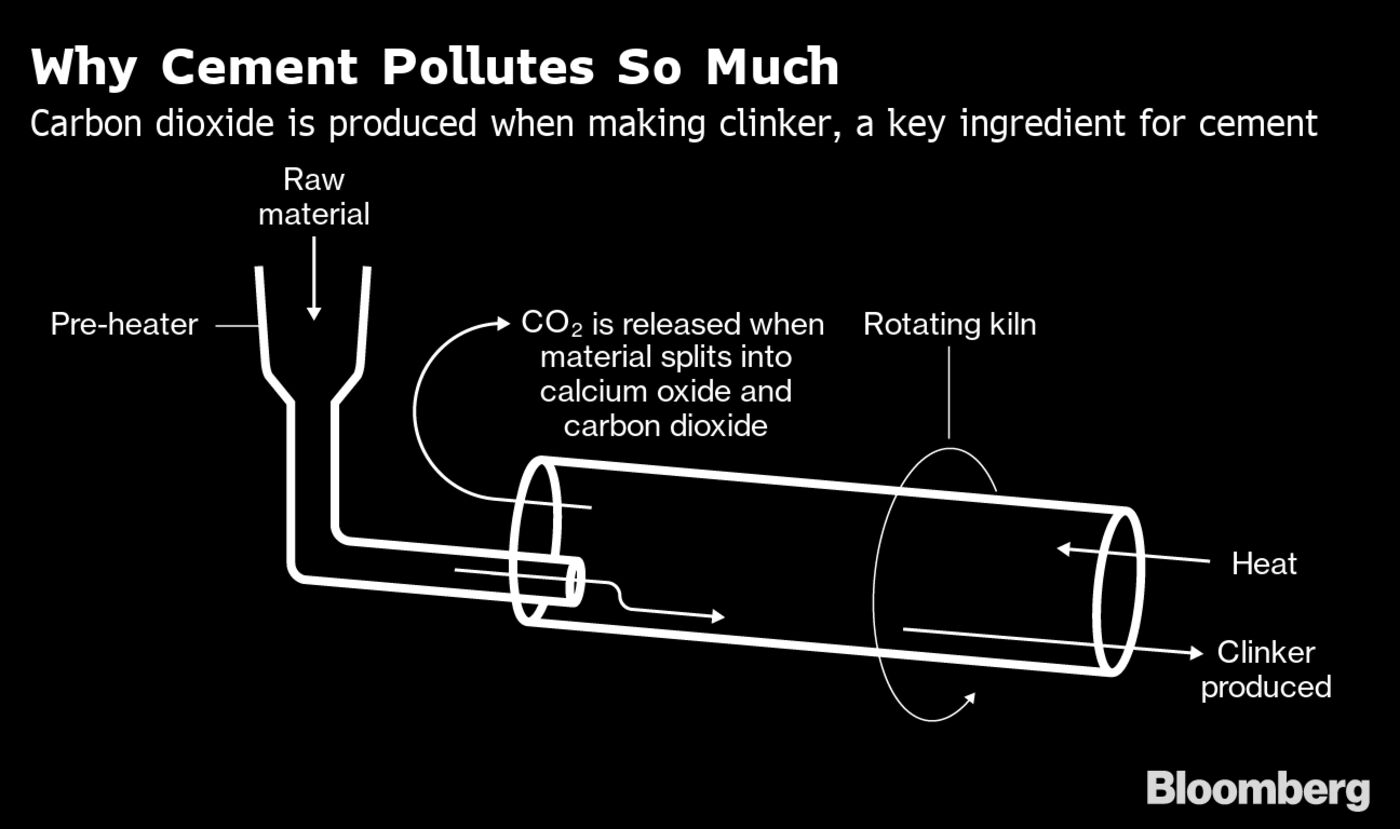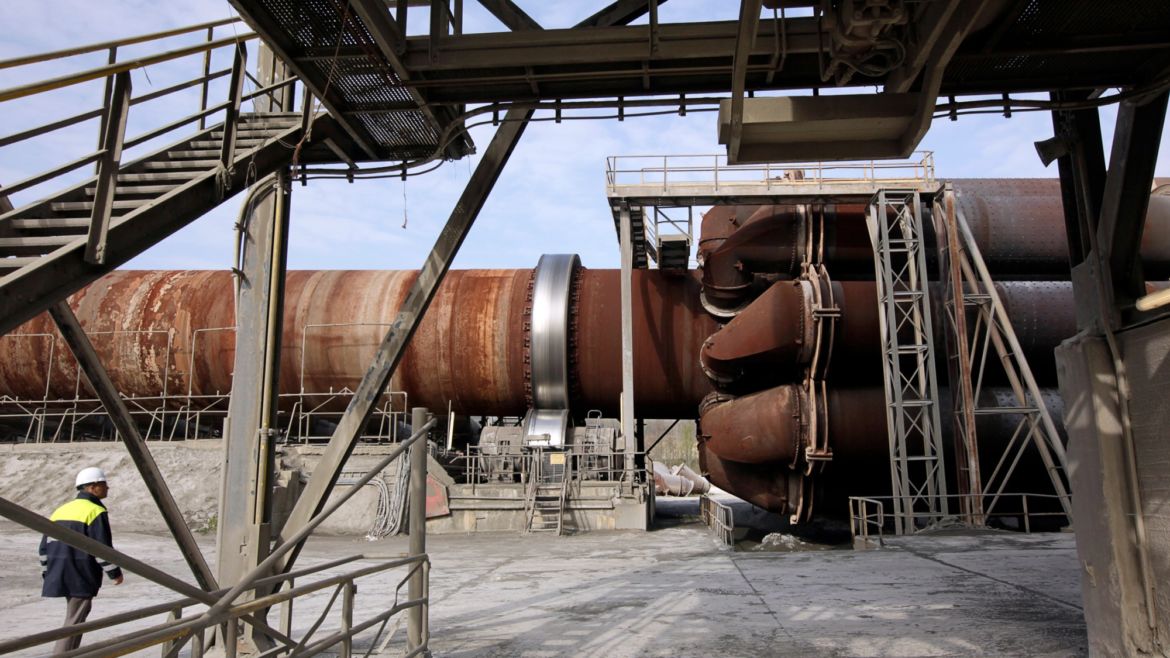On June 15th I sent you this article: Can Concrete Really Save the Planet? As a follow up to this is the following article which describes the pressure that investors are placing on cement companies to reduce and ultimately eliminate their CO2 emissions.
“Members of the Institutional Investors Group on Climate change and the Climate Action 100+, a coalition of money managers with more than $33 trillion under management, is asking that European construction-material companies commit to a target of reducing net carbon dioxide emissions to zero by 2050.”
The financial community has a huge hammer with which to beat the industry into compliance: MONEY.
“Construction material companies may ultimately risk divestment and lack of access to capital,’’ said Vincent Kaufmann, chief executive officer of the Ethos Foundation, a member of the group. “An increasing number of investors seek to exclude highly carbon-intensive sectors from their portfolios to meet their own decarbonization plans.”
I am astounded (and delighted) at the dramatic shift in how the public, but equally if not more importantly, the capital markets, view of the critical threat that climate chaos portends. While I am hopeful that the impact of the public’s awakening is not only to elect candidates that also recognize the urgency of dramatic action immediately, I am even more excited about how the financial world has woken up to the disaster to the economic foundation of the world economy that this threat presents and is beginning to put its money behind making dramatic changes.
“The cement sector needs to dramatically reduce the contribution it makes to climate change. Delaying or avoiding this challenge is not an option,” said Pfeifer. “This is ultimately a business-critical issue.”
In order to have half a chance of avoiding total disaster we must get this cement problem right. After all, “The industry accounts for 7% of the world’s man-made carbon dioxide”. And, “If the cement industry was a country, it would be the third largest global emitter, behind China and the U.S.,”
Cement Companies Are Starting to Get a $33 Trillion Headache
Investors are turning on cement producers, demanding more transparency and action on how they plan to help slow global warming.
By
Vanessa Dezem and William Wilkes
-
Climate group calls for 2050 carbon neutrality pledge
-
Cement production accounts for 7% of global carbon emissions

The kiln at ENCI cement factory, part of the Heidelberg group, Maastricht, Netherlands.(AP Photo/Peter Dejong)
The world’s biggest cement makers have been under pressure from environmental groups, regulators and lawmakers to cut pollution. Now, some of the world’s most powerful investors are echoing those calls.
Members of the Institutional Investors Group on Climate change and the Climate Action 100+, a coalition of money managers with more than $33 trillion under management, is asking that European construction-material companies commit to a target of reducing net carbon dioxide emissions to zero by 2050. The group sent the demands to CRH Plc, LafargeHolcim Ltd, HeidelbergCement AG and Compagnie de Saint-Gobain SA, along with letters setting out steps applicable for each company on how to get there.
Just like industries from traditional power generation to shipping and transportation, pressure on is mounting on cement companies to clean up and help slow global warming. The industry accounts for 7% of the world’s man-made carbon dioxide, according to the International Energy Agency.
“Construction material companies may ultimately risk divestment and lack of access to capital,’’ said Vincent Kaufmann, chief executive officer of the Ethos Foundation, a member of the group. “An increasing number of investors seek to exclude highly carbon-intensive sectors from their portfolios to meet their own decarbonization plans.”

Click here to read a story on why greener forms of cement are difficult to sell.
Money managers are calling on the companies to detail how climate change impact their business in order for shareholders to better assess those who aren’t preparing for such scenarios, according to the IIGCC, which is an arm of Climate Action 100+. It also called on companies to align their investments with efforts to limit global warming to less than 2 degrees Celsius (3.6 Fahrenheit).
“If the cement industry was a country, it would be the third largest global emitter, behind China and the U.S.,” said Jocelyn Brown, a senior investment manager for sustainable ownership at RPMI Railpen Ltd., a pension fund for the British railway industry.
Cement makers should set both short, medium and longterm targets to reach a goal of becoming carbon neutral by 2050, according to IIGCC. Investors also expect that they assign specific responsibility for climate change to a board committee or board member, the group said.
HeidelbergCement, for one, has already set net zero emission targets for 2050. It aims to achieve that through measures from cutting CO2 in clinker, cement and concrete as well as through carbon capture and recycling, according to an email from the company. LafargeHolcim has since 1990 reduced its net carbon emissions per tonne of cement by 25 percent and is increasing its focus on innovative technologies including carbon capture, as well as new clinker and cements, said a company’s spokesman.

Cement companies are also exposed to prices in the European carbon market, which have quadrupled in value since the start of last year. Besides facing higher costs if they don’t cut emissions quickly enough, the firms can also lose potential revenue from the sale of excess allowances as regulators tighten allocation of allowances in the program, said Stephanie Pfeifer, CEO at IIGCC and a member of the Climate Action 100+ steering committee.
Deutsche Bank, as cited by IIGCC, estimated that cement prices will need to rise by as much as 5% in 2020 to compensate for the gain in carbon costs. The surge will have a negative impact of between 1.3% and 5.1% by 2020 on earnings before interest, tax, depreciation and amortization by 2020 for European cement producers, according to the bank.
The sector will face changes from stricter buildings and infrastructure regulations, as nations take initiatives to meet their own climate targets.
“The cement sector needs to dramatically reduce the contribution it makes to climate change. Delaying or avoiding this challenge is not an option,” said Pfeifer. “This is ultimately a business-critical issue.”
Climate Action 100+ also asks firms to follow recommendations of the Task Force on Climate-related Financial Disclosures, which is led by Michael Bloomberg, the majority owner of Bloomberg L.P.



